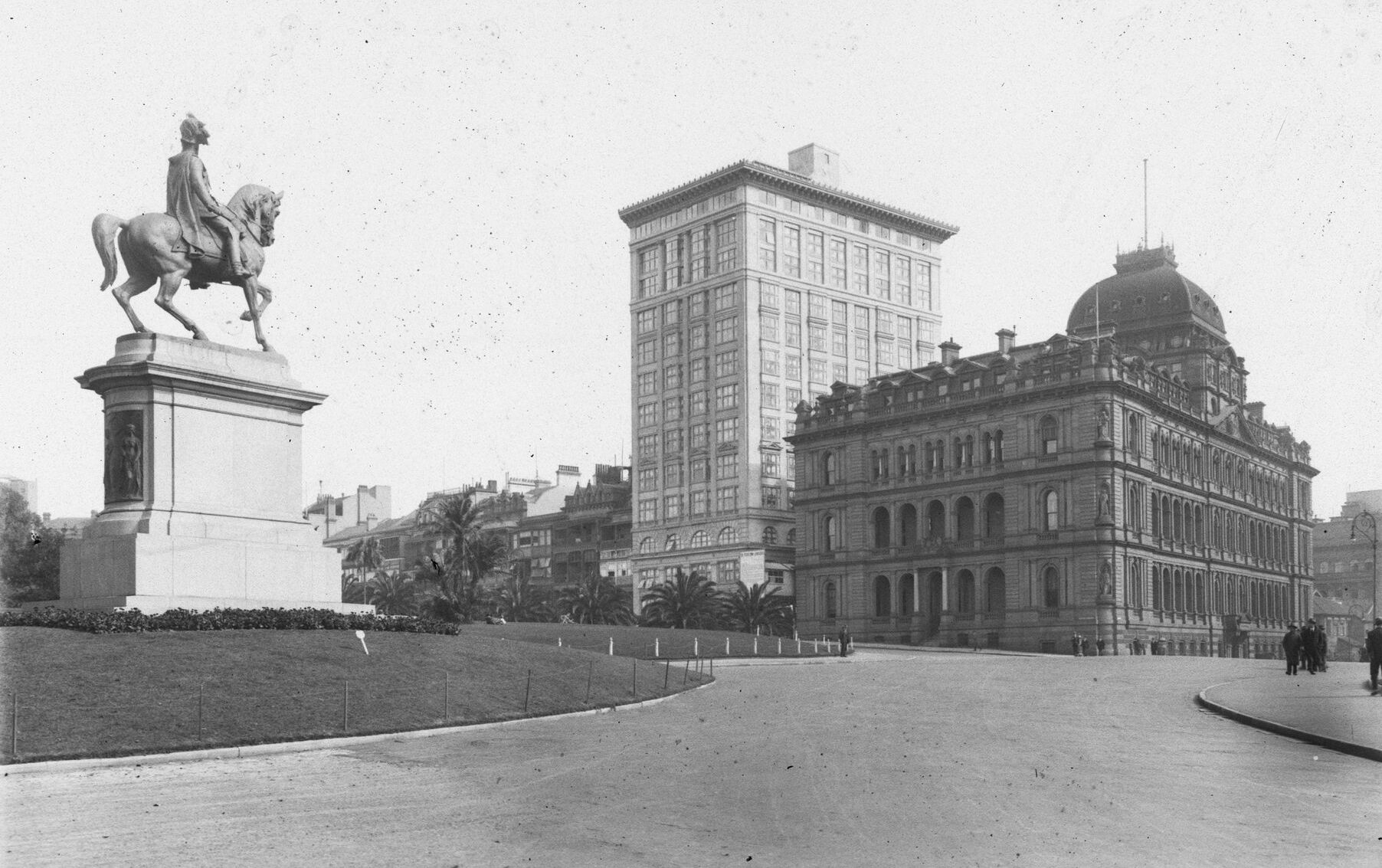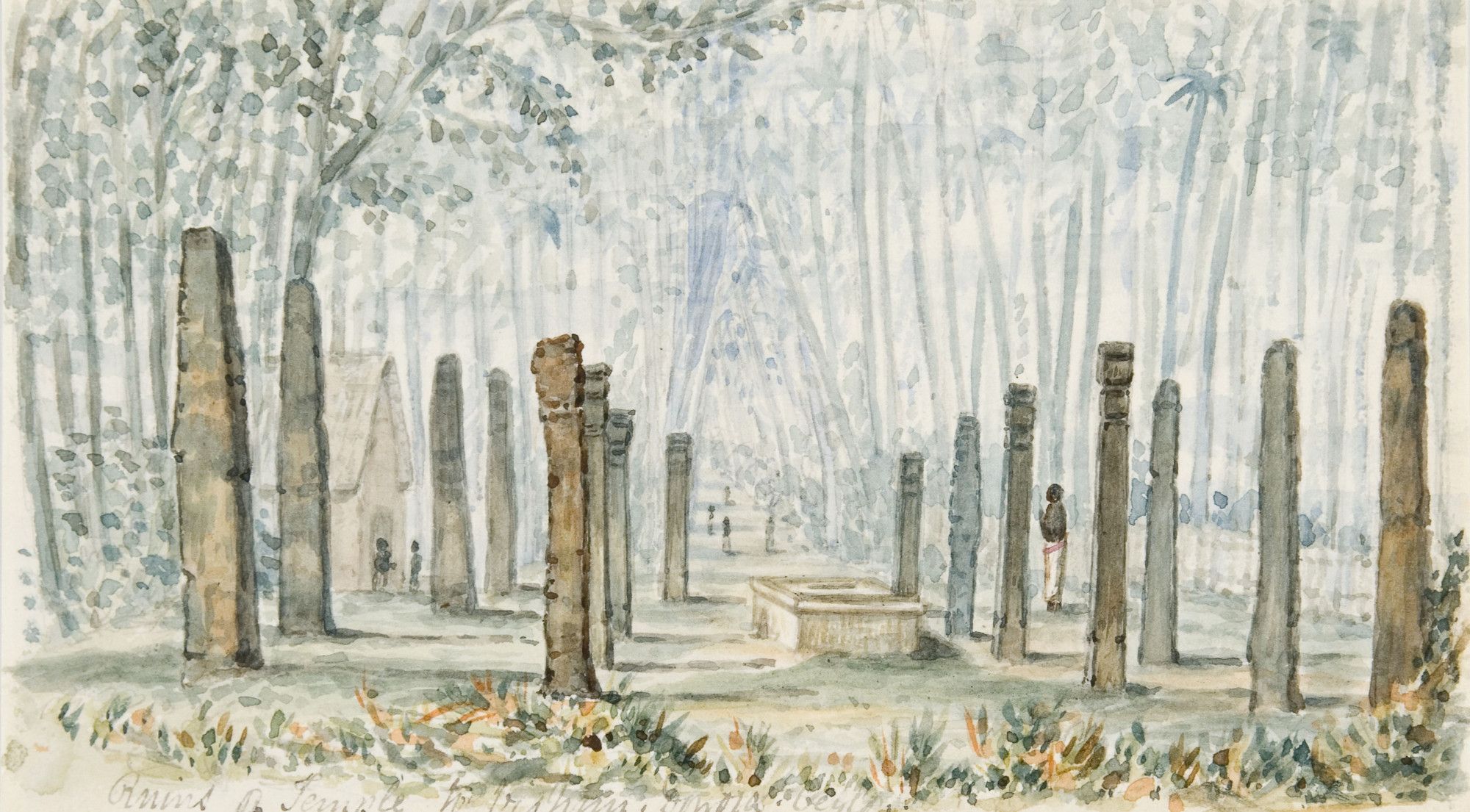An extraordinary collection
Sought out by researchers, designers, artists, musicians and members of the public from across the globe, the Caroline Simpson Collection has become Australia’s leading source of information on the history of houses, interiors, furnishings, gardens and domestic life.
The Caroline Simpson Collection, located at The Mint, is an invaluable resource for anyone interested in the social and cultural history of the Australian home, from the late 1700s to the present. Every day, people use the collection to research projects from films to fashion collections, home renovations and architectural dissertations. Looking for a first edition of Antiquities of Athens to check the proportions of an Ionic column? Ever wondered how to make lye soap from wood ash, or where to find an embroidery pattern for some ‘Berlin wool work’, or what the most popular garden plants were in the 1840s? Need to reproduce some acid-pastel paint colours for your 1950s weekender or track down a 1960s Italian pendant light fitting? The Caroline Simpson Collection has it all!
A practical initiative
The collection was established in 1984 as the Lyndhurst Conservation Resource Centre, an early initiative of the Historic Houses Trust (now Museums of History NSW) to provide public access to its holdings of trade catalogues, soft furnishings samples, textiles, wallpapers, tiles, light fittings, architectural pattern books and reference works. These items were originally drawn together by curators to assist them with the restoration and refurbishment of the first houses in the HHT’s care: Vaucluse House, Elizabeth Bay House and Elizabeth Farm. At that time, the approach reflected growing interest worldwide in the authentic presentation of historic buildings informed by scholarly study of original documentary sources and material.
The HHT’s refurnishing and presentation of these historic houses – focusing as much on kitchens and outhouses as on grand drawing rooms – won accolades and also attracted interest from members of the public seeking reliable information for their own projects. In response, the first director of the HHT, Dr Peter Watts AM, sought government funding to establish a dedicated library and resource centre. As the HHT’s core subject areas then were NSW colonial houses and domestic life, acquisitions focused on houses, gardens and domestic material culture.
A transformative gift
In 2004, the HHT was gifted an important collection of Australian colonial furniture, pictures, objets d’art and ephemera, as well as a substantial financial contribution, by the family of the late Mrs Caroline Simpson OAM. In recognition of Mrs Simpson’s long advocacy for heritage conservation in NSW, including her own privately operated house museum and collection in Millers Point, the library and resource centre collections were renamed the Caroline Simpson Library & Research Collection.
The gift coincided with the relocation of the HHT’s headquarters from heritage listed Lyndhurst residence in Glebe, to the conserved and restored Mint coining factory in Macquarie Street, where the Caroline Simpson Library occupies a purpose-built reading room, book stacks, research space and collection stores. The new central location enabled the expansion of education programs for tertiary students in architecture, interior design, design technologies and museum studies, and offers greater accessibility for the increasing numbers of people researching aspects of their own house, street or suburb.
An acclaimed architecture and design collection
Today, the Caroline Simpson Library’s holdings related to architecture and the home are the best of their kind in Australia, including the country’s only complete set of Rudolph Ackermann’s Repository of Arts; the most substantial collection of trade literature related to houses, interiors and gardens in Australia; and an extensive range of department store catalogues.
One of the most significant acquisitions for the collection was the purchase of the Wasmuth Portfolio, a two-volume folio of the work of the highly influential American architect Frank Lloyd Wright. Exquisite in their own right, the portfolio images – widely republished throughout the 20th century – also inspired a younger generation of Australian architects, such as Bruce Rickard, who became admired for his ‘Sydney school’ houses, superbly integrated into bushland sites using natural materials. In 2018, the Caroline Simpson Collection acquired Rickard’s complete office archive, reflecting our role as the emerging subject leader in the study of modernist houses in Sydney.
More recently, acquisitions have documented modernist houses and interiors in Australia, and particularly the contribution of migrant designers and craftspeople such as Paul Kafka, Steven Kalmar, Emmerich Révész, Hugo Stossel and George Surtees who came to Australia from central and eastern Europe from the late 1930s onwards.
Enriching MHNSW’s exhibitions and programs
Caroline Simpson Collection items regularly feature in SLM’s exhibitions, many of which have toured extensively throughout Australia. Among these are Dream Home, Small Home (2014), curated by Megan Martin and Michael Lech and chronicling the aspirational home-plan services of the 1950s and 60s; and Marion Hall Best: Interiors (2017), curated by Michael Lech, featuring some of the extensive collection of furniture, textiles and drawings associated with the celebrated Sydney interior designer.
The Caroline Simpson Collection also provides a treasure-trove of material for a changing program of displays within the library itself, and online resources such as Internet Archive.
Digitisation and access
MHNSW has an extensive collection of 19th-century Australian and British sheet music provenanced to Australian families, much of it fragile. Over the past decade, the Caroline Simpson Collection has highlighted the significance of this material and embarked on an ambitious cataloguing and digitisation project. With the support of donors, the Caroline Simpson Collection has now digitised and published online more than 400 items, made and supported new recordings of live and studio performances, and contributed to international publications and music programs. The 2019 exhibition Songs of Home, curated by research librarian Dr Matthew Stephens, featured sheet music, instruments and images from the various MHNSW collections to explore domestic music in the pre-phonograph era.
The digitisation of collections to enable broader access is a major initiative as students and researchers increasingly use discovery tools to connect with the content they need. Far from rendering original books, manuscripts, pictures and domestic objects irrelevant, the sharing of items through digitisation often drives an interest in their physical nature, and the Caroline Simpson Collection has seen growing engagement by educators exploring the unique opportunities this collection provides for learning and cultural understanding through the study of objects.
Our evolving partnership with the NSW State Archives Collection has opened up further opportunities. While each collection retains its integrity, there are many points of intersection that allow new perspectives on the history and culture of NSW.
Published on
Related
Browse all
The Wasmuth Portfolio
Frank Lloyd Wright’s Wasmuth Portfolio, is regarded as one of the most influential architectural treatises of the 20th century

The Astor, 1923–2023
Upon completion in 1923, The Astor in Sydney's Macquarie Stree twas the largest reinforced concrete building in Australia, the tallest residential block, and this country’s first company title residences

City of Gods, my early experience and toy boat
Inspired by a watercolour of the ruins of the temple of Vishnu, refugee curator in residence Jagath Dheerasekara writes about Devinuvara as a site of pilgrimage, colonisation and uprising
